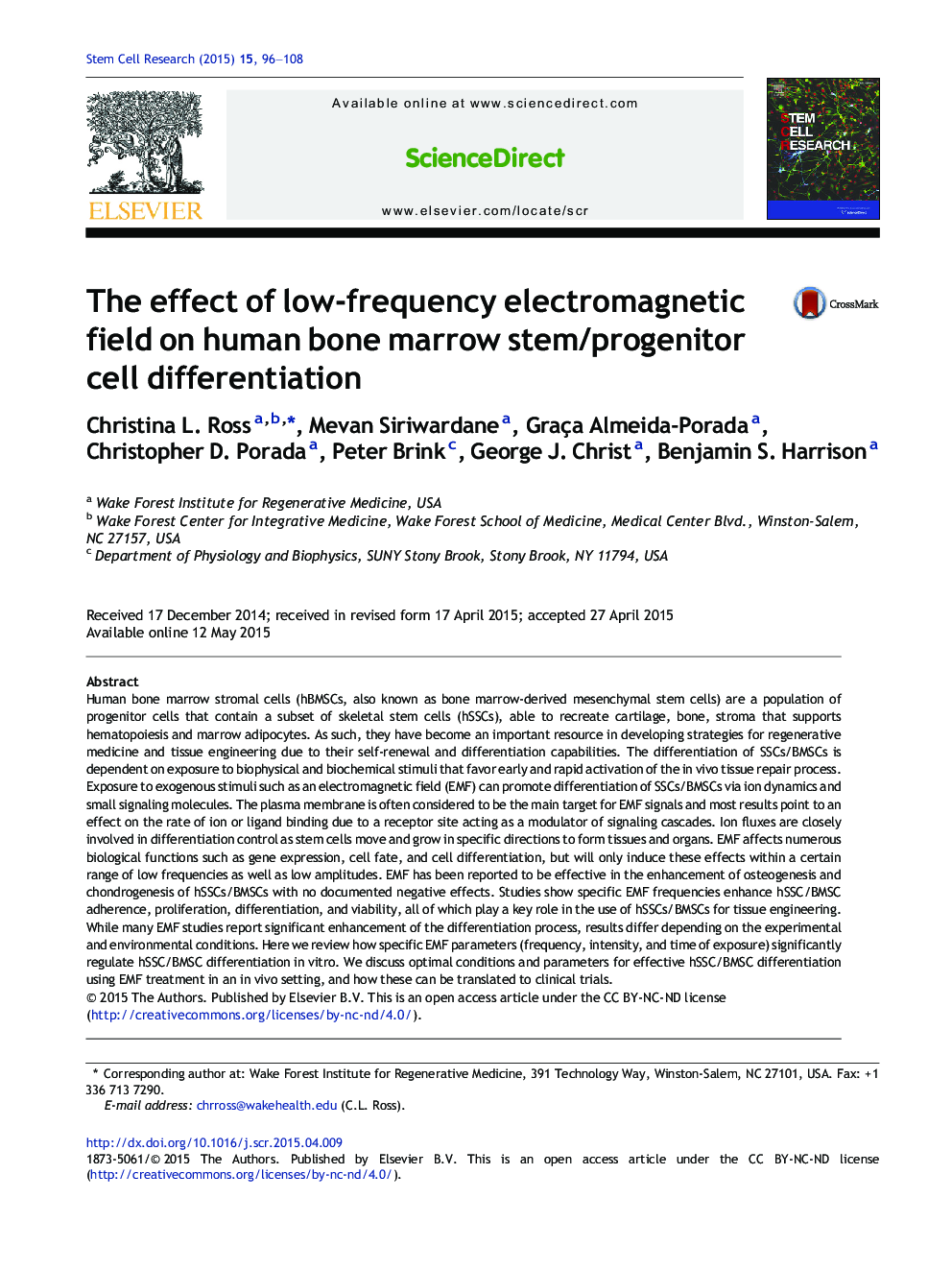| Article ID | Journal | Published Year | Pages | File Type |
|---|---|---|---|---|
| 2094066 | Stem Cell Research | 2015 | 13 Pages |
•Review of EMF and human bone marrow skeletal stem/stromal progenitor cell differentiation•EMF modulates SSCs/BMSCs via ion dynamics and small signaling molecules.•EMF enhances hSSC/BMSC adherence, proliferation, differentiation, and viability.
Human bone marrow stromal cells (hBMSCs, also known as bone marrow-derived mesenchymal stem cells) are a population of progenitor cells that contain a subset of skeletal stem cells (hSSCs), able to recreate cartilage, bone, stroma that supports hematopoiesis and marrow adipocytes. As such, they have become an important resource in developing strategies for regenerative medicine and tissue engineering due to their self-renewal and differentiation capabilities. The differentiation of SSCs/BMSCs is dependent on exposure to biophysical and biochemical stimuli that favor early and rapid activation of the in vivo tissue repair process. Exposure to exogenous stimuli such as an electromagnetic field (EMF) can promote differentiation of SSCs/BMSCs via ion dynamics and small signaling molecules. The plasma membrane is often considered to be the main target for EMF signals and most results point to an effect on the rate of ion or ligand binding due to a receptor site acting as a modulator of signaling cascades. Ion fluxes are closely involved in differentiation control as stem cells move and grow in specific directions to form tissues and organs. EMF affects numerous biological functions such as gene expression, cell fate, and cell differentiation, but will only induce these effects within a certain range of low frequencies as well as low amplitudes. EMF has been reported to be effective in the enhancement of osteogenesis and chondrogenesis of hSSCs/BMSCs with no documented negative effects. Studies show specific EMF frequencies enhance hSSC/BMSC adherence, proliferation, differentiation, and viability, all of which play a key role in the use of hSSCs/BMSCs for tissue engineering. While many EMF studies report significant enhancement of the differentiation process, results differ depending on the experimental and environmental conditions. Here we review how specific EMF parameters (frequency, intensity, and time of exposure) significantly regulate hSSC/BMSC differentiation in vitro. We discuss optimal conditions and parameters for effective hSSC/BMSC differentiation using EMF treatment in an in vivo setting, and how these can be translated to clinical trials.
